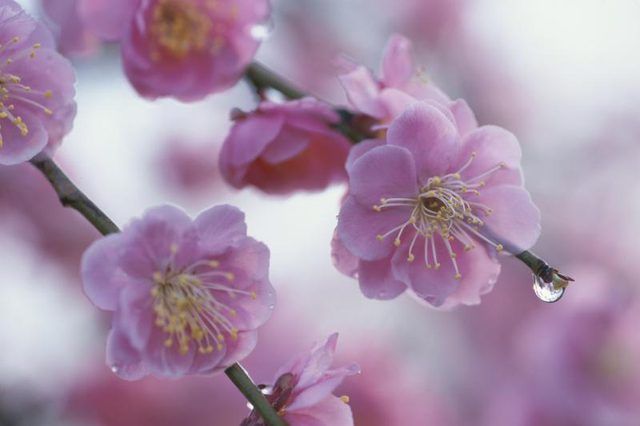Bulbs
Flower Basics
Flower Beds & Specialty Gardens
Flower Garden
Garden Furniture
Garden Gnomes
Garden Seeds
Garden Sheds
Garden Statues
Garden Tools & Supplies
Gardening Basics
Green & Organic
Groundcovers & Vines
Growing Annuals
Growing Basil
Growing Beans
Growing Berries
Growing Blueberries
Growing Cactus
Growing Corn
Growing Cotton
Growing Edibles
Growing Flowers
Growing Garlic
Growing Grapes
Growing Grass
Growing Herbs
Growing Jasmine
Growing Mint
Growing Mushrooms
Orchids
Growing Peanuts
Growing Perennials
Growing Plants
Growing Rosemary
Growing Roses
Growing Strawberries
Growing Sunflowers
Growing Thyme
Growing Tomatoes
Growing Tulips
Growing Vegetables
Herb Basics
Herb Garden
Indoor Growing
Landscaping Basics
Landscaping Patios
Landscaping Plants
Landscaping Shrubs
Landscaping Trees
Landscaping Walks & Pathways
Lawn Basics
Lawn Maintenance
Lawn Mowers
Lawn Ornaments
Lawn Planting
Lawn Tools
Outdoor Growing
Overall Landscape Planning
Pests, Weeds & Problems
Plant Basics
Rock Garden
Rose Garden
Shrubs
Soil
Specialty Gardens
Trees
Vegetable Garden
Yard Maintenance
Plum Tree Pests
Plum Tree Pests. Plum trees (Prunus spp.), which grow in U.S. Department of Agriculture plant hardiness zones 3 through 9, suffer from fewer pests than other fruit trees, but pests can still be a serious problem. Learning to identify the diseases and insects that can cause damage makes it easier to choose the proper control methods. The use of...

Plum trees (Prunus spp.), which grow in U.S. Department of Agriculture plant hardiness zones 3 through 9, suffer from fewer pests than other fruit trees, but pests can still be a serious problem. Learning to identify the diseases and insects that can cause damage makes it easier to choose the proper control methods. The use of pesticides by the homeowner is problematic. The availability of manageable amounts of effective chemicals has dwindled over time, and there are limits to how many times they can be applied in a season. Good cultural practices can reduce pest damage and improve survival rates.
Plum Curculio
The plum curculio is a common, potentially destructive insect pest affecting plum trees. Fruit is ruined by adult curculios and their larvae. The adults make holes in the fruit to feed and lay eggs, introducing fungal infection and rot. Larvae tunnel through the fruit as they feed. Adults are beetles about 1/4 inch long, gray or black with light mottling. They have a slender snout about one-quarter the length of their body. Larvae are white or yellow grubs. Cucurlios can be reduced by removing and discarding the fallen leaves and old fruit under the tree often, which prevents the larvae from developing into adults. Sometimes adequate control of this pest can only be achieved with the careful use of pesticides, beginning at petal fall. Usually, a two or three applications at weekly intervals will be sufficient, notes Cornell University. Insecticide choices include products containing
phosmet or carbaryl; both are highly toxic to bees and need to be used with caution. Read and follow all of the instructions on the label of the product you use; the mix rate for one concentrate product containing carbaryl is 3 ounces per gallon of water. Wear a long-sleeved shirt and eye protection when spraying the insecticide and avoid using on windy days.
Shothole Borer
This small brown or black beetle damages the plum tree's sapwood, and can kill branches or even the whole tree. The small, white larvae damage the sapwood by burrowing through it as they feed. Healthy trees resist infection by forming resin, which usually kills the grubs. A good preventative measure is to keep trees healthy. Insecticides are not recommended for use against this pest. Control is achieved by pruning infested branches. Promptly shred them or haul them to the dump before the beetle can spread. Clean pruning tools with a cloth soaked in rubbing alcohol before pruning to avoid spreading disease, and after use as well.
Crown and Root Rot
This disease is caused by a soil pathogen called phytophthora. Infected trees grow slowly, have sparse, yellowing leaves, small fruit, and wilt easily. Sudden death can occur. As this disease is incurable, prevention is the only effective management strategy. Phytophthora only develops in overly moist soil, especially in the presence of standing water. It can also be spread between trees through root contact. Plant in well-draining soil and avoid over-watering. Remove any infected trees before they can spread the pest to neighboring trees.
Perennial Canker
Canker causes damage to sapwood and bark that can kill branches. Sunken, discolored areas, usually oval in shape, are the hallmark of this pest. Sometimes a dark exudate is found at the edges of the damage. This disease is caused by a fungus called Cytospora. Infection occurs when spores invade wounds on the tree. Prevent infection by avoiding physical damage that allows spore entry. Manage infections by pruning diseased portions at least 4 inches below visibly affected areas. Clean the pruning shears between each cut to avoid reintroducing the fungus into healthy tissue.